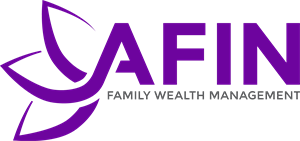
Secure 2.0 Act
Secure Act 2.0
We thank Cetera for putting together the summary of a very long Secure Act 2.0 There are more details in this 4000+ page document that will affect individuals and institutional retirement plans, however, this is a good starting summary.
Why Does This Matter?
After many months of negotiation and review the long-awaited Secure 2.0 Act of 2022 was passed. This was part of the massive (more than 4000 pages) Consolidated Appropriations Act of 2023 which was passed and signed into law by President Biden on December 23, 2022. In general, the Secure 2.0 Act encompasses a variety of provisions with varying implementation dates. The following outline breaks down which part of the act applies to employees and employers.
For Employees
Required Minimum Distribution (RMD)
• RMD start date increased to age 75 over ten years
o Starting in 2023 increase to age 73.
o For those turning age 74 after 2032 RMD must start at age 75.
• Early withdrawal without any penalty due to any federally declared disaster. Historically each disaster required separate new legislation.
• After enactment penalty-free withdrawal is permitted for one who is diagnosed with a terminal illness.
• Penalty-free withdrawal allowed for victims of domestic abuse up to the lower of $10,000 or 50% of the account.
• Early withdrawal is available to Public Safety Officers after the age of 50 or who have 25 years of service.
Catch-Up Limits & Contributions
• Starting in 2025 an additional increase in the catch-up limit of $10,000 for those age 60, 61, 62 or 63, (simple plans $5,000 limit).
• After 2023 IRA catch-up for those older than age 50 will have the limits increased for inflation.
• After 2023 all catch-up contributions are subject to Roth (i.e., after-tax) rules, rather than only where allowed by the plan.
Miscellaneous
- For tax years starting after 2026, the saver’s credit is modified to allow a 50% credit with a phase-out for higher-income individuals. It will continue to be adjusted annually for inflation.
For Employers
- Employers can make non-elective contributions to Simple IRAs or Simple 401(k)s up to 10% of compensation.
- For plan years after 2023, employers may make payments to qualified plans that match student loan payments by employees.
- Automatic enrollment in pension plans will begin for plan years after 2023. The sponsor will automatically enroll plan participants (401(k)) and 403(b) in their plan. Contributions will be between 3% to 10%, although employees may opt out of this feature.
Michael Goldenberg, CFP®
CEO/Co-Founder, Senior Financial Advisor
1220 Kensington Rd, Suite 220, Oak Brook, IL 60523
C: 630-230-1038
mgoldenberg@afinwealth.com
Matt Butler
Investment Executive
1220 Kensington Rd, Suite 220, Oak Brook, IL 60523
Direct: 630-686-3267
mbutler@afinwealth.com

